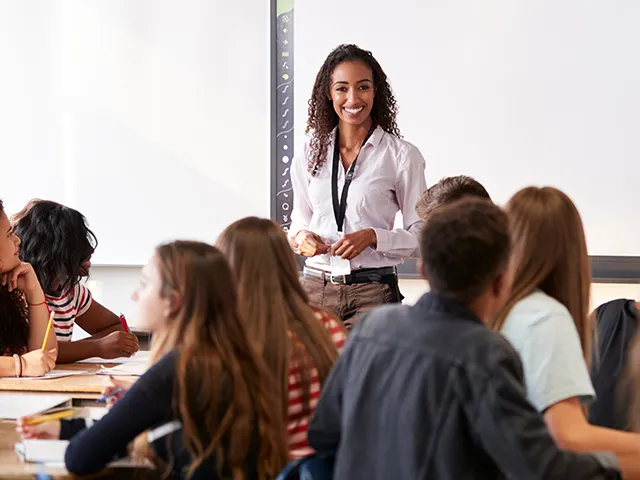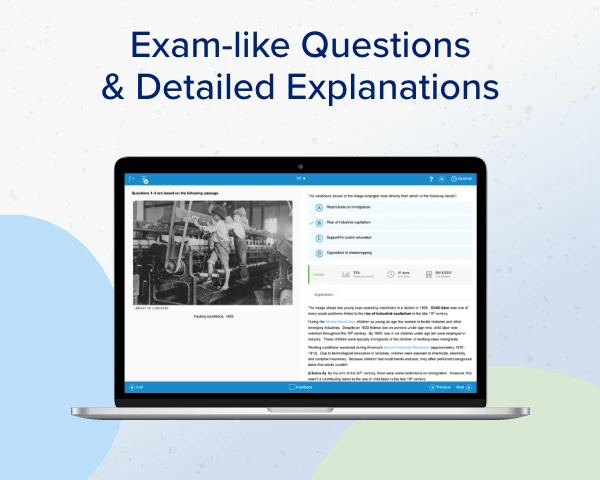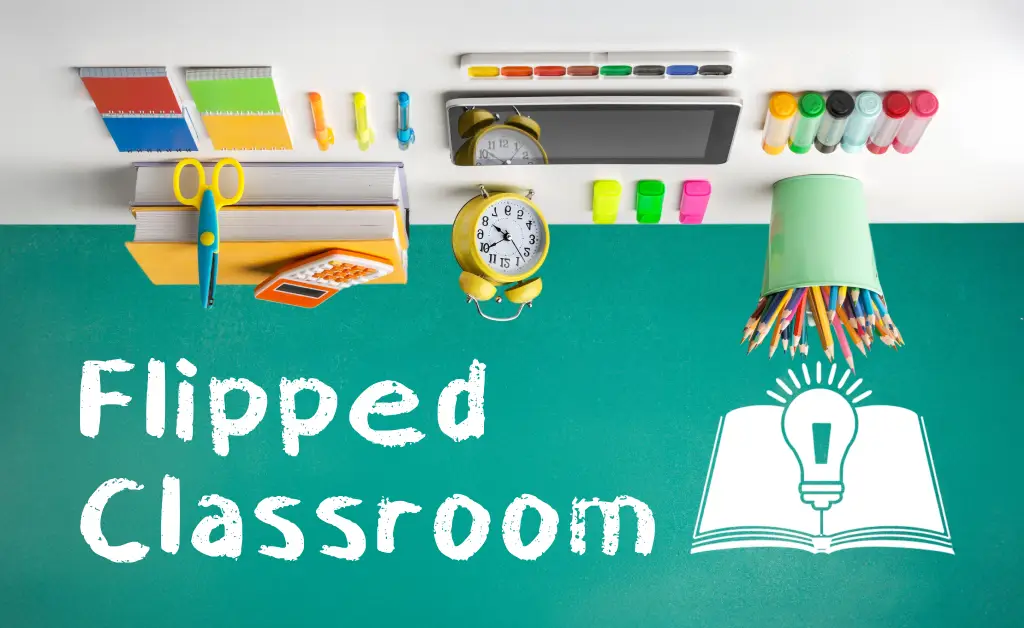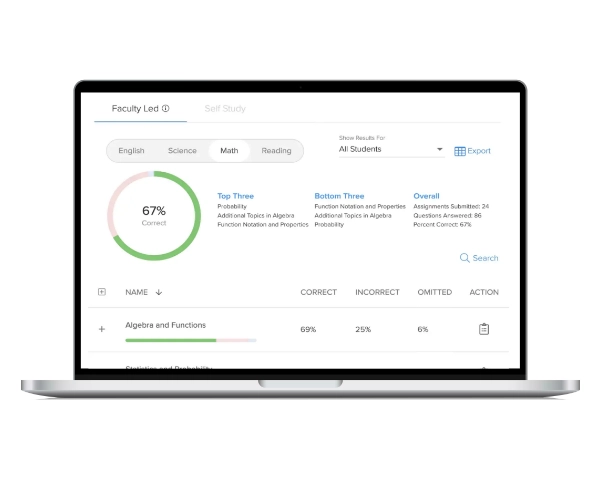In today’s fast-paced educational environment, many AP® teachers are looking for innovative ways to engage their students while making the most of class time. The flipped classroom model offers a compelling solution. This teaching method shifts the traditional classroom dynamic, allowing you to focus on interactive and applied learning during class. This guide will walk you through how you can implement a flipped classroom effectively with your AP courses.
What Is a Flipped Classroom?
If you’re asking yourself, “What is a flipped classroom?” you’re not alone. A flipped classroom inverts the traditional teaching model. Instead of delivering lectures during class time and assigning homework to be completed independently, the flipped model asks students to engage with instructional content—such as videos, readings, or podcasts—outside of class. This pre-class engagement is known as "first exposure learning." When students come to class, they already have a foundational understanding of the material, which frees up class time for hands-on activities, discussions, and problem-solving.

The flipped classroom is not just about watching videos at home. It’s about creating a more student-centered learning environment in and out of the classroom. By front-loading the acquisition of basic content, you can dedicate class time to deeper exploration of concepts, collaborative work, and personalized instruction. This approach allows your students to engage more actively with the material and with each other, making learning a more dynamic and interactive process.
How Does the Flipped Classroom Model Work?
Implementing a flipped classroom requires thoughtful planning and a shift in teaching practices and student responsibilities. For instance, in an AP Calculus class, students might watch a short video on differentiation techniques and then answer some questions about it at home. The next day in class, they would turn in their assigned video questions and then apply what they’ve learned to solve complex problems, engage in peer discussions, or work through challenging scenarios with the teacher’s guidance.
This model works across various subjects. In an AP Biology course, students could be assigned a video with some embedded questions or an assigned related activity explaining cellular respiration before class. Then, during class, they might conduct a lab experiment to reinforce their understanding of the process. The key to successfully putting flipped classroom teaching strategies into action is ensuring that the out-of-class content is accessible, concise, includes a deliverable for accountability, and is directly aligned with the in-class activities.
Benefits of Flipped Classroom Learning
The flipped classroom model offers a dynamic shift in teaching and learning, providing distinct advantages for you and your students alike. By reimagining how instructional time is utilized, this approach fosters a more interactive and personalized learning experience within an AP classroom.
For You
One of the main benefits of a flipped classroom is the ability to use class time for effective learning activities rather than passive lectures. Since your students come to class with a basic understanding of the material, you can focus on facilitating discussions, guiding group work, and providing targeted feedback. This shift for you—from lecturer to facilitator – allows for more meaningful interactions with your students, helping you address individual needs and misconceptions as they arise.
By leveraging technology to deliver content outside of class, you can gather data on your students’ understanding before class even begins. For example, you can embed questions in videos and track student responses, providing valuable insights into which concepts need further clarification.
For Your Students
Your students benefit from the flipped classroom model by gaining more control over their learning. They can watch instructional videos at their own pace, rewatching and reviewing them as needed to ensure they understand the material. They can also use their pre-class materials as a reference while they’re completing in-class tasks and answering questions. This self-paced learning can be especially beneficial for students who may struggle with the fast pace of traditional lectures.
In the classroom, your students forego time spent listening to lectures for time spent engaging in active learning, participating in discussions, collaborative projects, and hands-on activities. This approach deepens their understanding of the material and helps them develop critical thinking and problem-solving skills. Additionally, students often feel more confident asking questions and seeking help during class, as you are more available to provide one-on-one support.

Your Role in a Flipped Classroom
In a flipped classroom, your role evolves from being a primary source of information to a guide and facilitator of learning. Rather than spending class time delivering lectures, you can focus on creating an environment where your students can actively engage with the material and apply their knowledge in meaningful ways.
This shift requires you to carefully design the out-of-class and in-class components of your students’ lessons. The out-of-class content needs to be clear and accessible, while the in-class activities should be challenging, interactive, and aligned with the course’s learning objectives. By stepping back from the traditional "sage on the stage" role, you can spend more time working directly with your students, addressing their individual needs and helping them overcome any challenges they encounter.

Preparing for a Flipped AP Classroom
Preparing for a flipped AP classroom involves careful planning and thoughtful resource selection. By establishing a clear pacing guide and developing high-quality course materials, you can create a structured and engaging learning environment that maximizes the benefits of the flipped classroom model.
Creating an AP Pacing Guide
A well-structured pacing guide for a flipped classroom outlines what content your students will engage with outside of class and what will be covered during class. When creating a pacing guide, it’s ideal to break down your curriculum into manageable units with clear objectives for each one. This helps students stay on track and ensures that class time is used effectively for deeper learning. AP Course and Exam Descriptions (CEDs) are great resources for AP pacing guides.
For instance, in an AP Calculus course, you might assign video lectures or readings on basic concepts such as limits or derivatives as pre-class work. Then, during class, you can focus on more complex applications, such as solving real-world problems or exploring the theoretical underpinnings of calculus concepts.
Developing Course Materials
The success of a flipped classroom depends heavily on the quality of the materials provided to your students for their pre-class work. These materials should be engaging, concise, and directly related to the in-class activities. Videos are a popular choice, but readings, podcasts, and interactive modules can also be effective.
When creating or choosing instructional resources, keep in mind that your students will need to access and understand the content independently. Resources such as UWorld’s Courses for AP offer a range of materials that align with AP curricula, including high-quality videos, study guides, and interactive questions with detailed answer explanations. These resources can help you create a cohesive and effective flipped classroom experience.
Implementing Flipped Classroom Teaching Strategies
Implementing flipped classroom teaching strategies requires a balanced approach that ensures your students are prepared before class, actively engaged during class, and can reflect on their learning after class. By carefully planning each phase of the learning process, you can create an environment where your students take ownership of their learning and make the most of the class time available.
Pre-Class Preparation
One of the challenges of a flipped classroom is ensuring that your students complete their pre-class assignments. To encourage accountability, consider requiring students to submit a deliverable before class, such as notes, a completed quiz, or a brief reflection on the material. This helps ensure that your students engage with the content and provides you with valuable information about their understanding before class begins. If students come to class without having completed their pre-class work, have them complete it somewhere on their own, such as a reserved area in the back of the classroom, while the other students engage in a group discussion or activity. Any whole group work they miss while catching up on videos and/or deliverables can then become homework.

In-Class Activities
With the foundational content covered outside of class, you can use class time for more interactive and engaging activities. These might include group problem-solving sessions, debates, or lab experiments. The goal is to create opportunities for your students to apply what they’ve learned and deepen their understanding of the material through collaboration and discussion.
UWorld’s resources can be useful in this context. You can incorporate UWorld’s pre-built assignments into your in-class activities, providing your students with challenging questions that test their understanding of key concepts. Additionally, tools such as UWorld’s PowerPoint presentations and instructional activities can help facilitate discussions and guide students through complex problems.
Post-Class Reflection and Assessment
Reflection and assessment are important for any classroom model, and the flipped classroom is no different. After class, try asking students to complete a brief reflection on what they learned, what they found challenging, and what they still need help with. This reinforces their learning and provides you with insights into how well the class is progressing.
Assessment can take many forms, from quizzes and tests to more informal checks for understanding. UWorld’s Check-for-Understanding questions will gauge your students’ comprehension and identify areas that may need further review.
Overcoming Challenges in a Flipped Classroom
While the flipped classroom model offers many benefits, it also comes with challenges. One common issue is ensuring that all students have access to the necessary technology and resources to complete their pre-class work. It’s important to assess your students’ access to devices and the internet and to provide alternatives for those who may face challenges, such as offering time during study hall or after school to complete the assignments.
Another challenge is managing students who do not complete the assigned pre-class work. One strategy is to allow those students to complete their missing pre-class work during class while their peers engage in more advanced activities. Teaching students pre-class work expectations takes time, so it’s important to plan for a learning curve.

How UWorld Supports the Flipped Classroom Model
UWorld’s Courses for AP offers a wide range of resources that can support your flipped classroom. Whether you’re looking for pre-class assignments, in-class activities, or assessments, our tools align with your curriculum and can help prepare your students for their AP exams.
For pre-class work, you can assign UWorld study guides, videos, and Check-for-Understanding questions. These resources are designed to provide your students with the foundational knowledge they need before coming to class. During class, you can use UWorld’s PowerPoint presentations and instructional activities to guide discussions and facilitate group work. And for assessment, UWorld’s pre-built assignments and quizzes can help you track your students’ progress and identify areas that may need additional review.
By incorporating UWorld’s resources into your flipped classroom, you can create a more engaging and effective learning environment that helps your students succeed.

References
- Kerrigan, J. (2024). Middletown Township Independent School District 2024 Case Study Interview [Video]. Google Drive. https://drive.google.com/file/d/1yiyDBq8erUughSgJuaKAnwUORw43w2eN/view?t=1
- Maneuvering the Middle. (n.d.). The flipped classroom. https://www.maneuveringthemiddle.com/the-flipped-classroom/
- Teaching AP Science. (n.d.). Flippin' your class. https://teachingapscience.com/flippin-your-class/
- Sparks, S. D. (2022, March 16). Flipped classes after the pandemic: Why these teachers say they'll never go back. Education Week. https://www.edweek.org/teaching-learning/flipped-classes-after-the-pandemic-why-these-teachers-say-theyll-never-go-back/2022/03
- Seeli, G. (2020, February 2). Reflections on flipped calculus. https://ghseeli.github.io/news/2020/02/02/reflections-on-flipped-calculus.html
- Study.com. (n.d.). What is a flipped classroom?. https://study.com/teach/flipped-classroom.html
- TeachThought. (n.d.). Definition of a flipped classroom. https://www.teachthought.com/learning/definition-flipped-classroom/
- Top Hat. (n.d.). Flipped classroom definition. https://tophat.com/glossary/f/flipped-classroom/
- The University of Texas at Austin. (n.d.). Flipped classroom. Center for Teaching and Learning. https://ctl.utexas.edu/instructional-strategies/flipped-classroom




